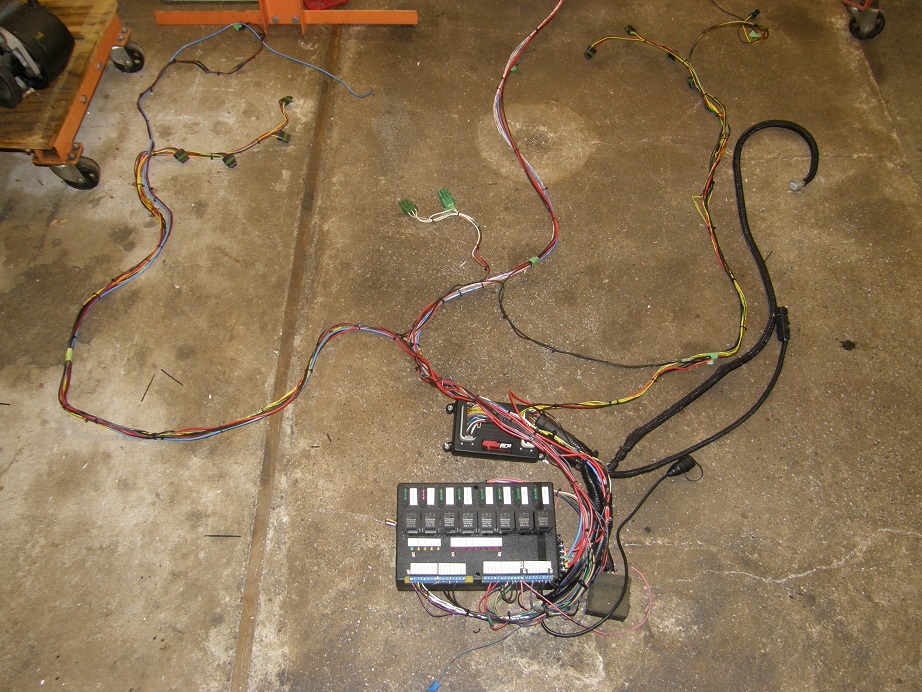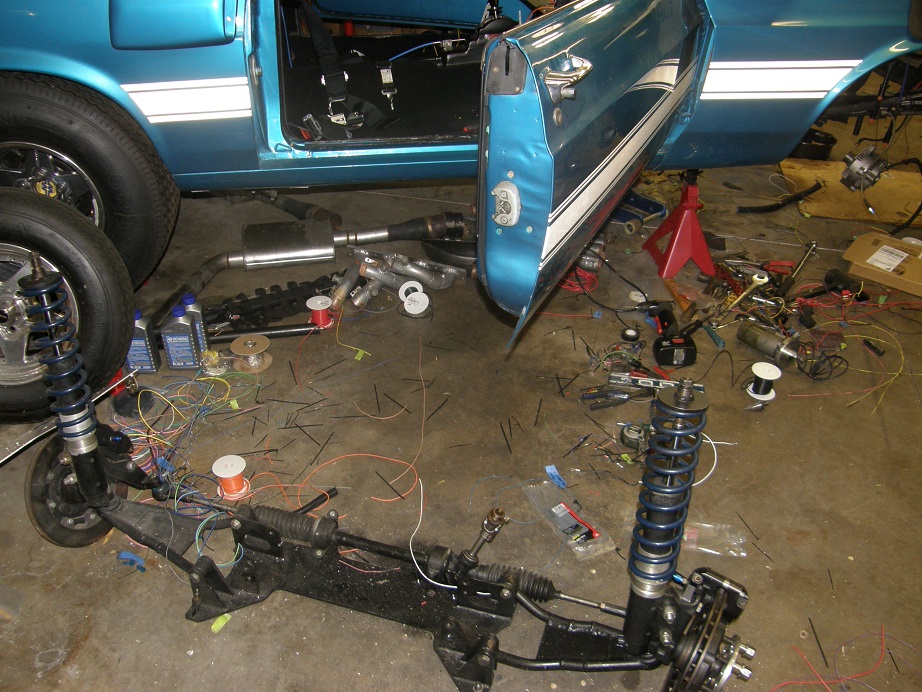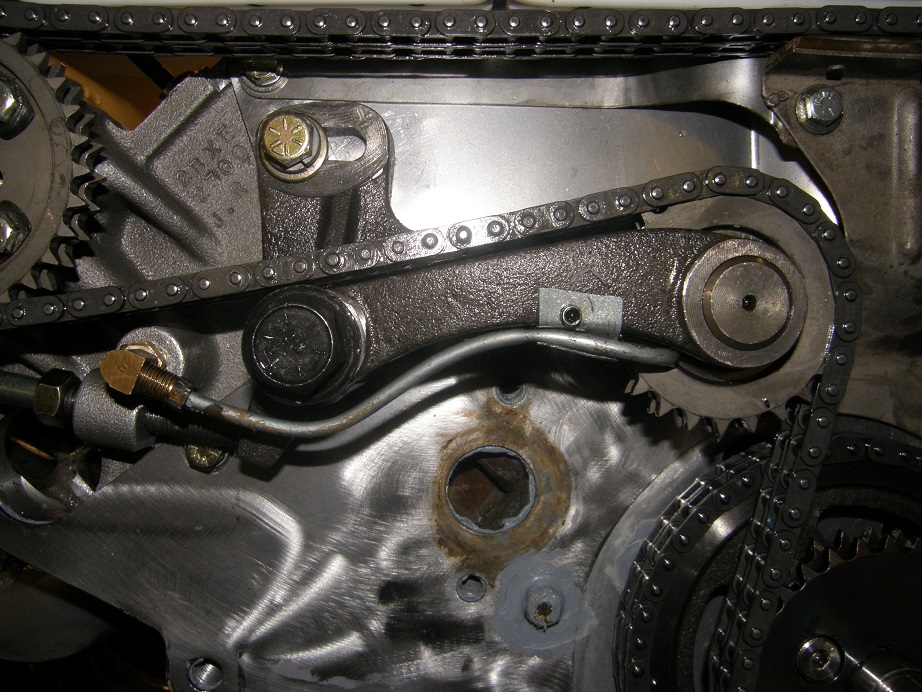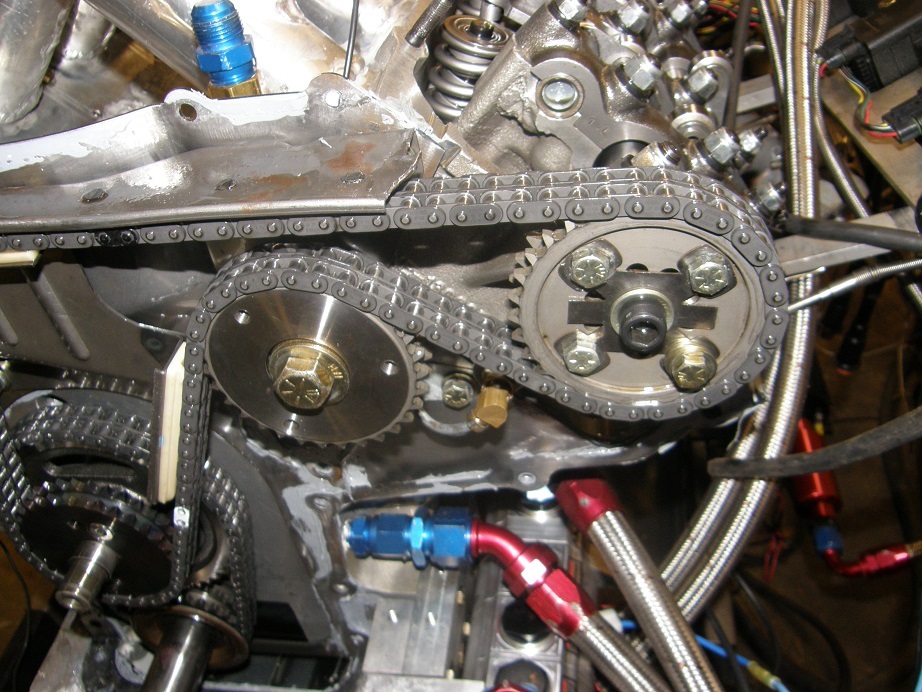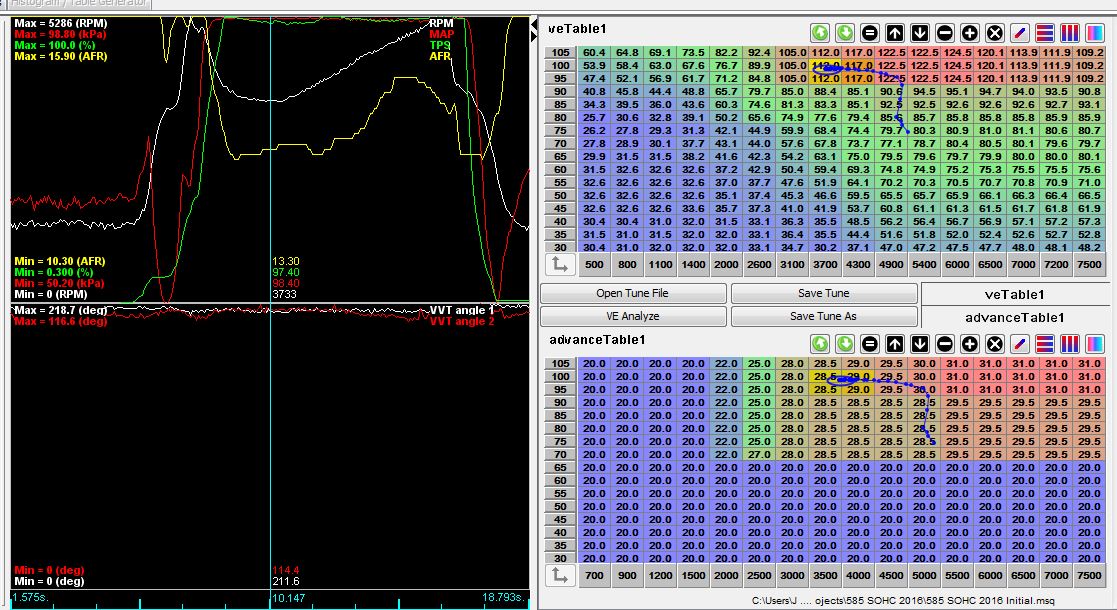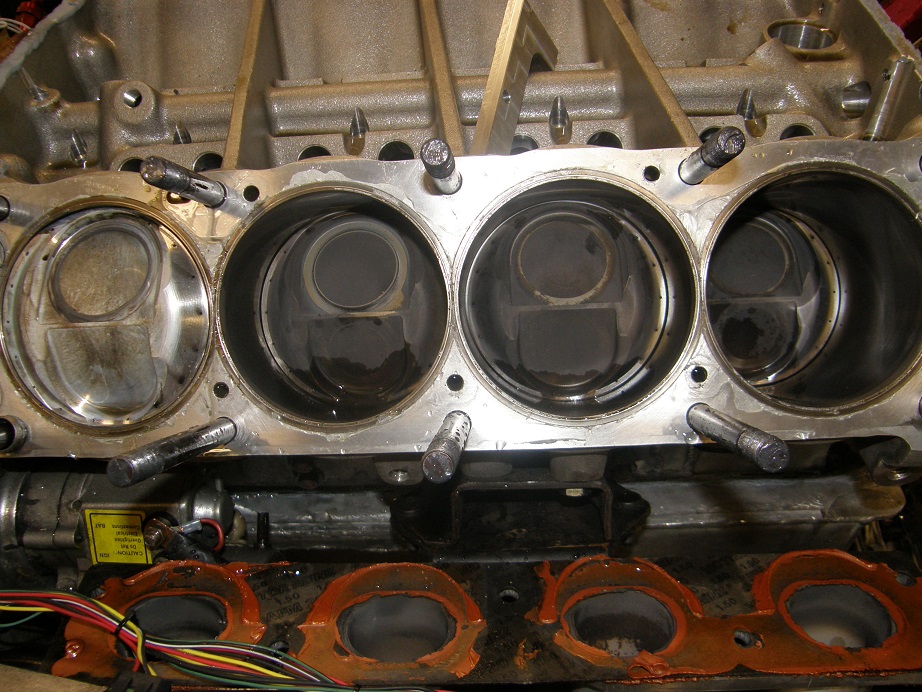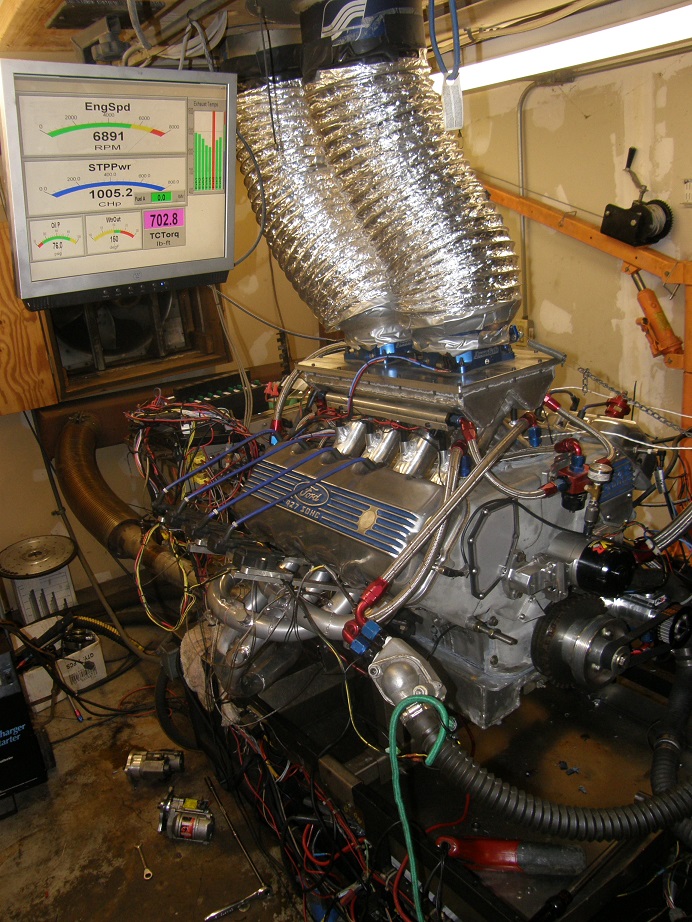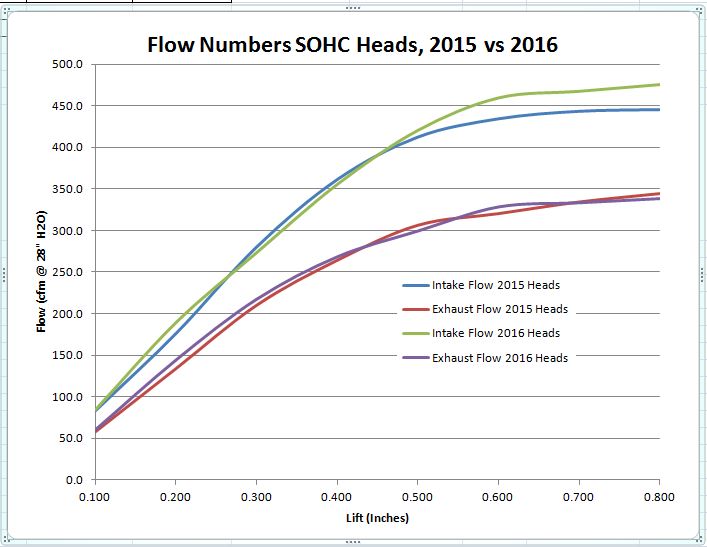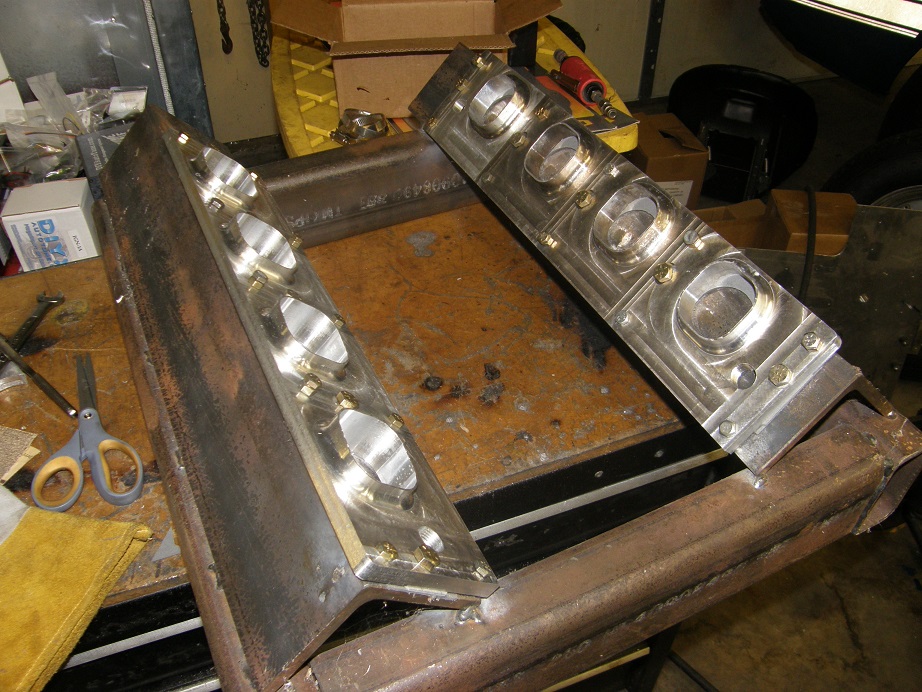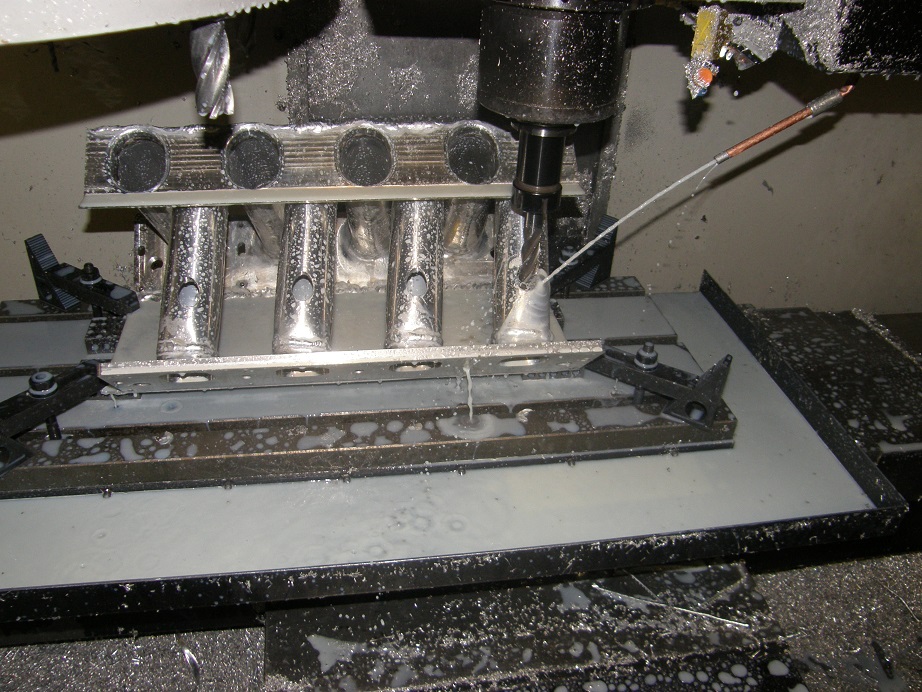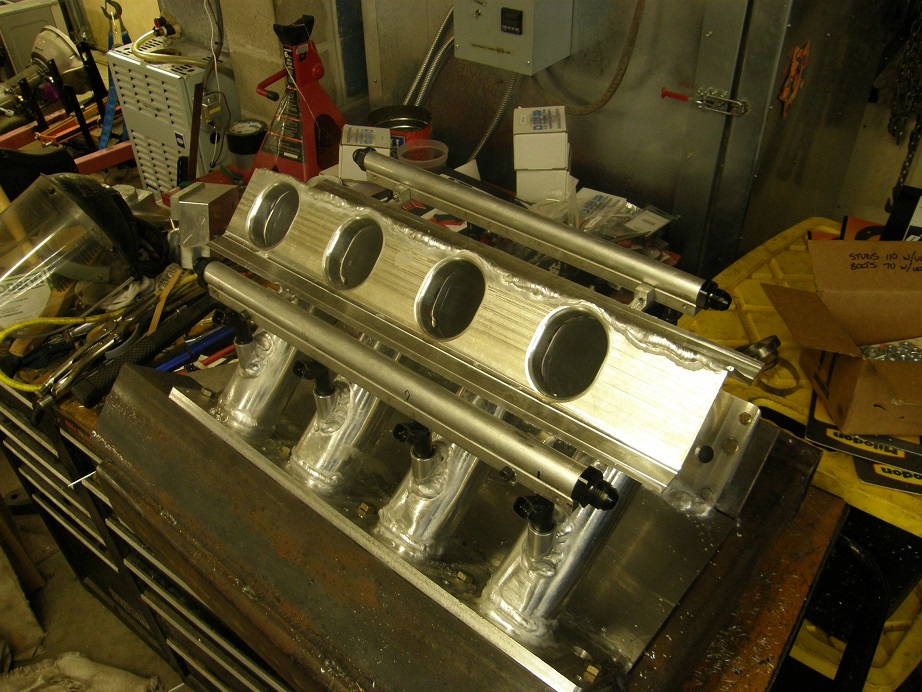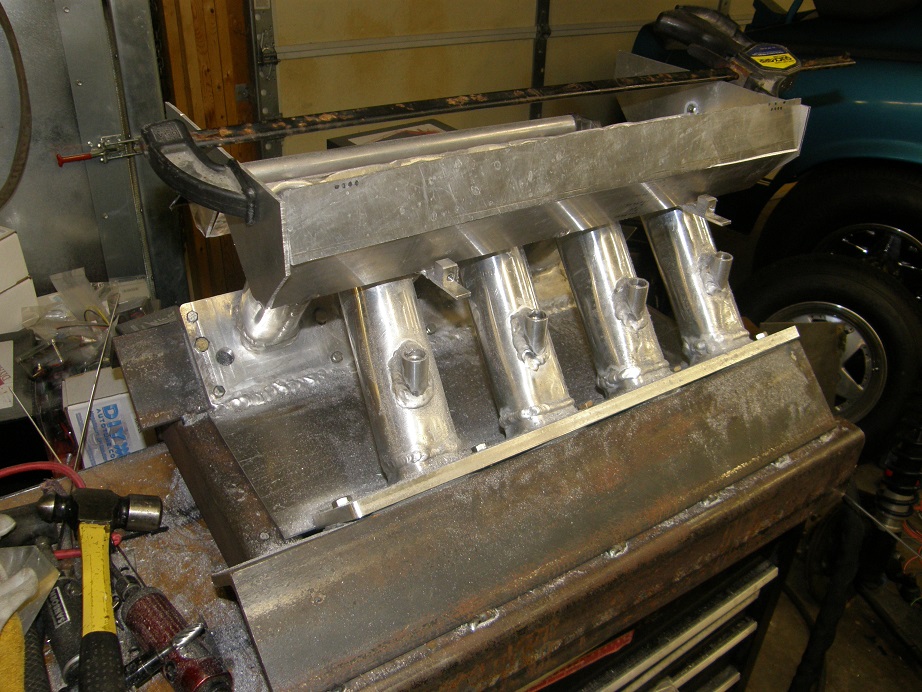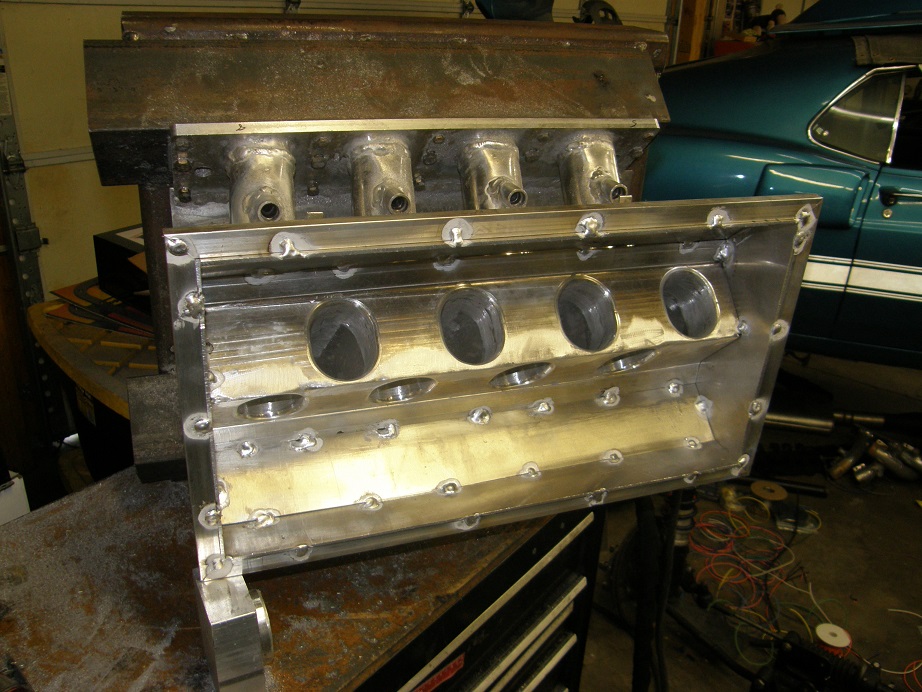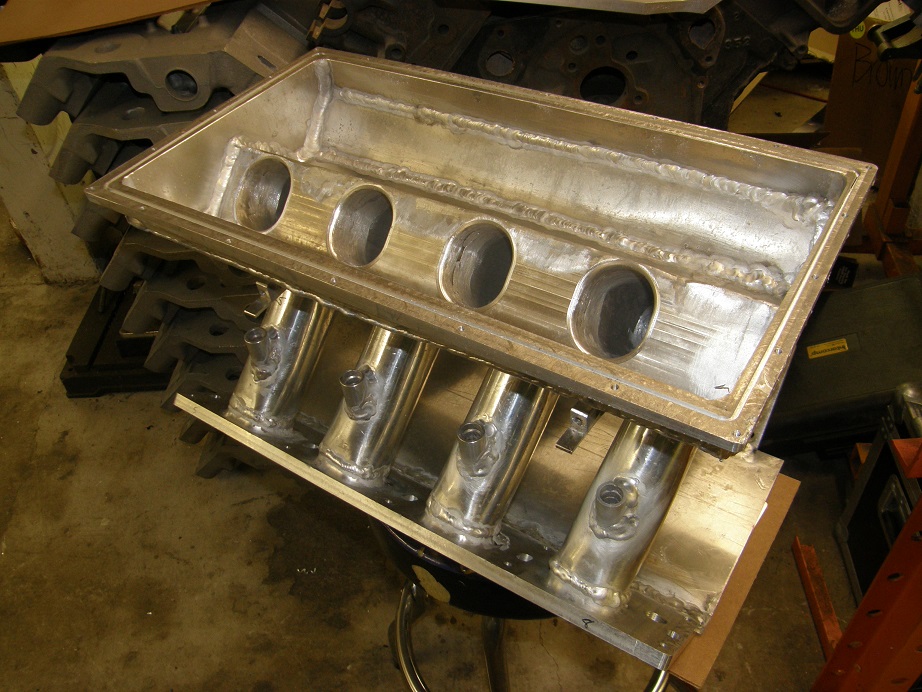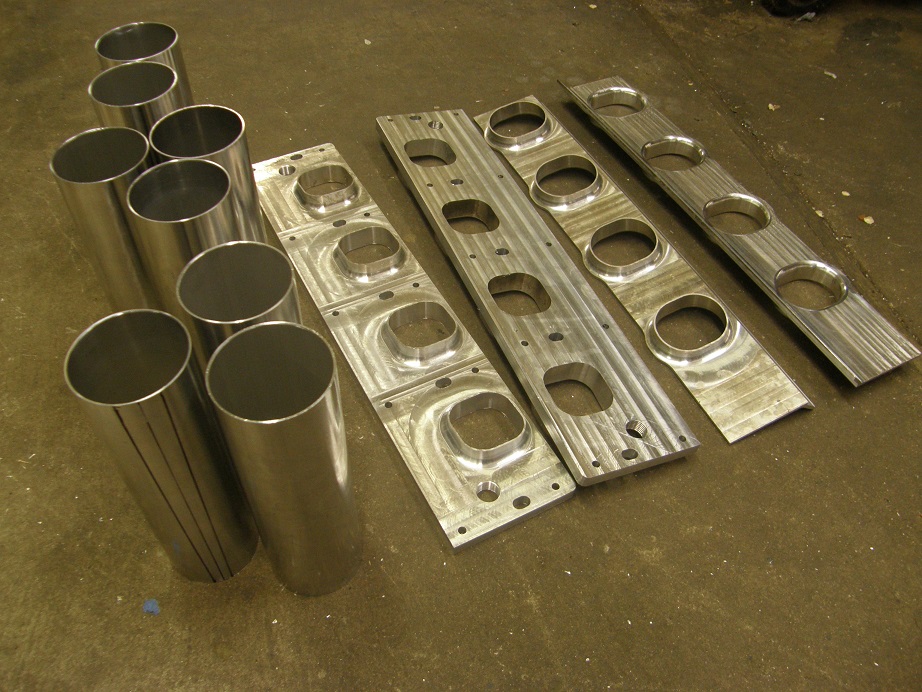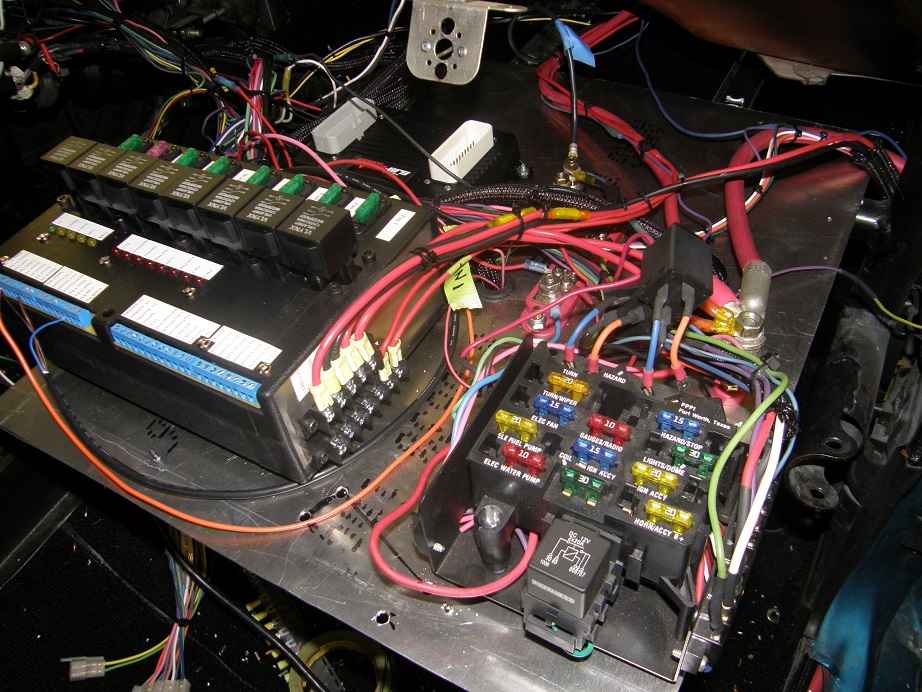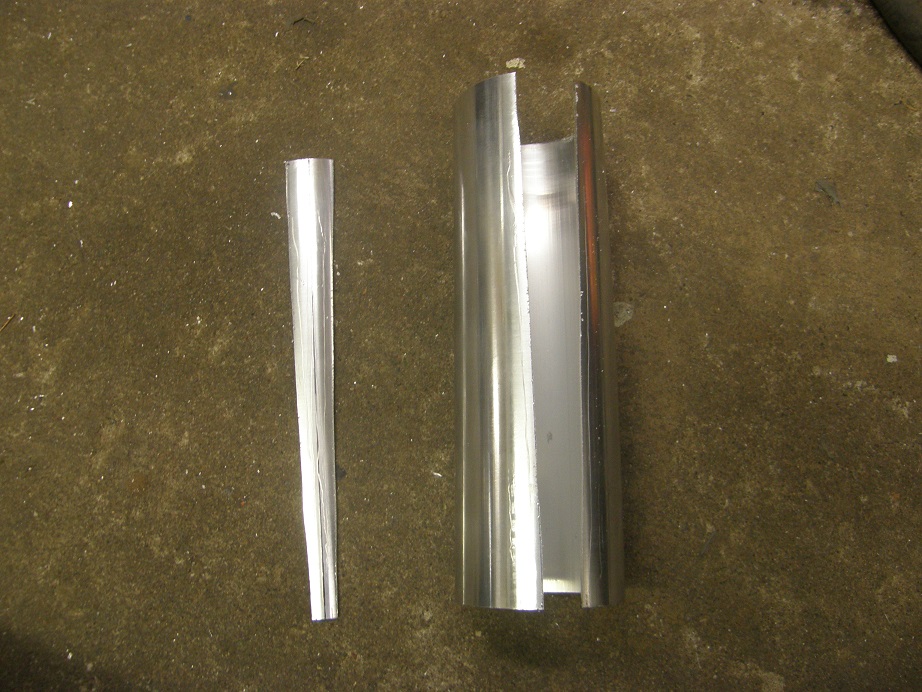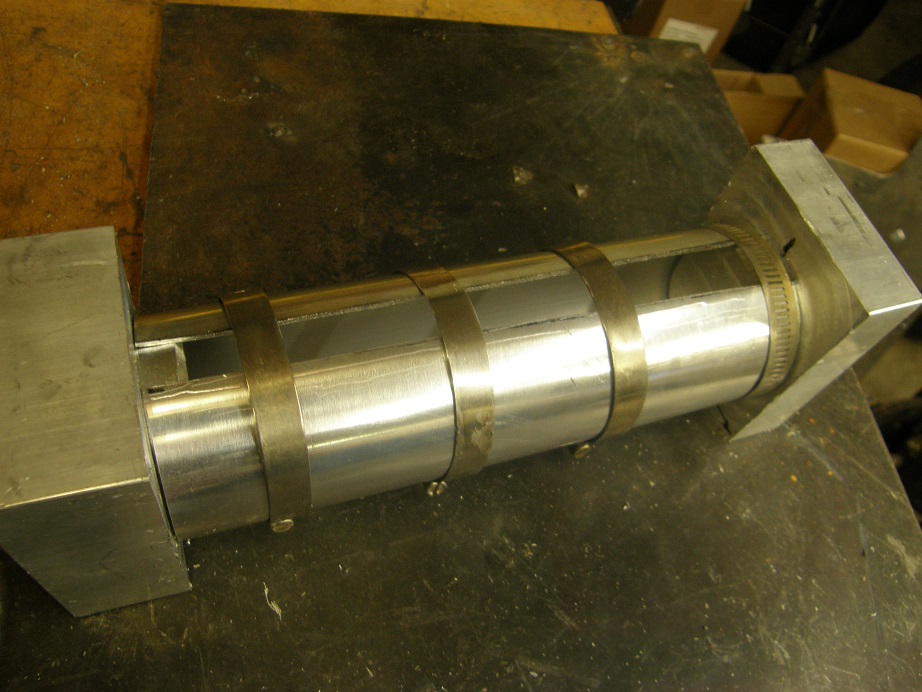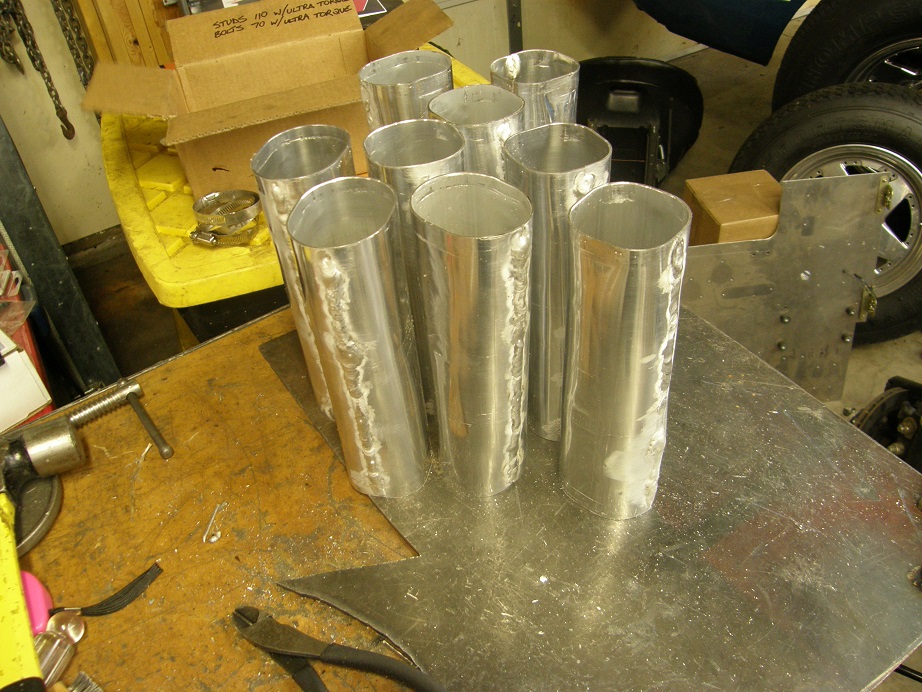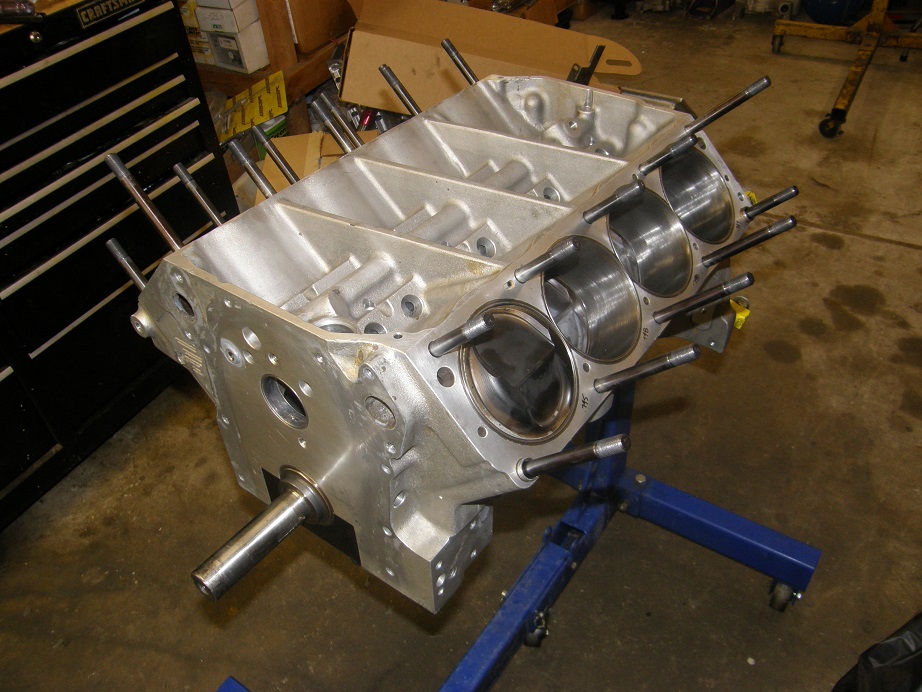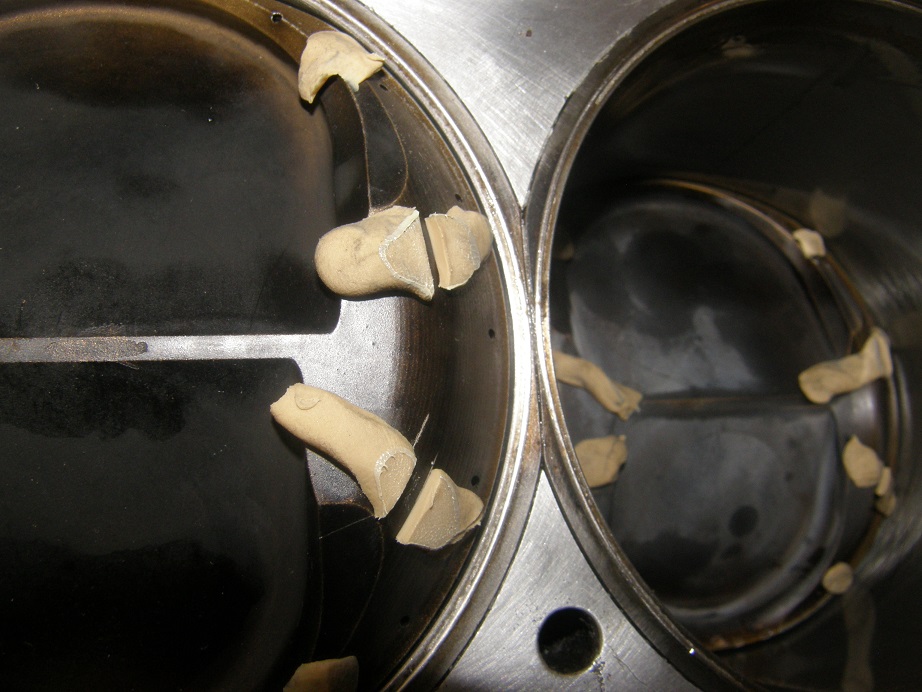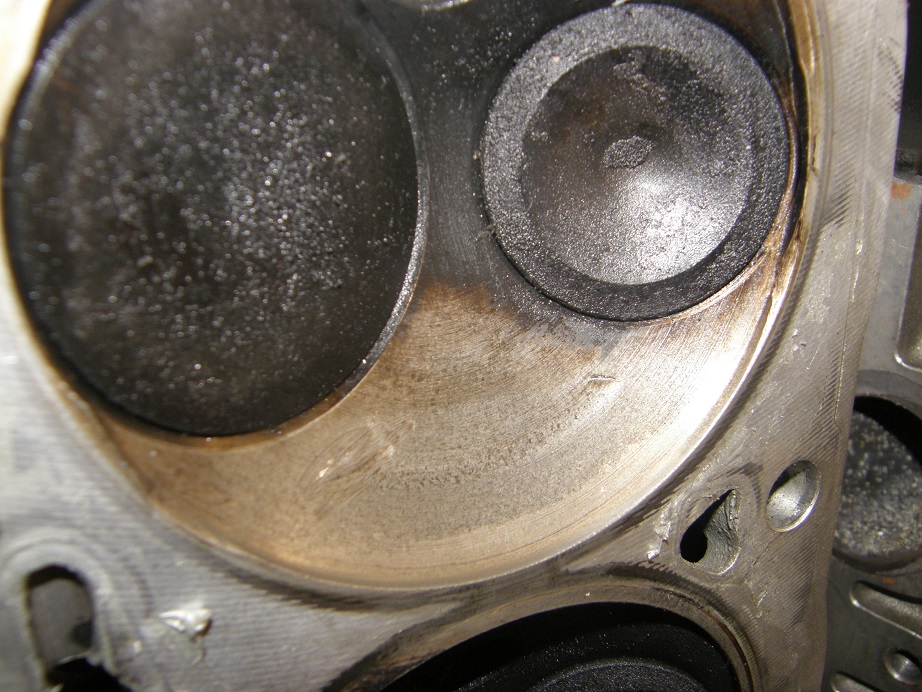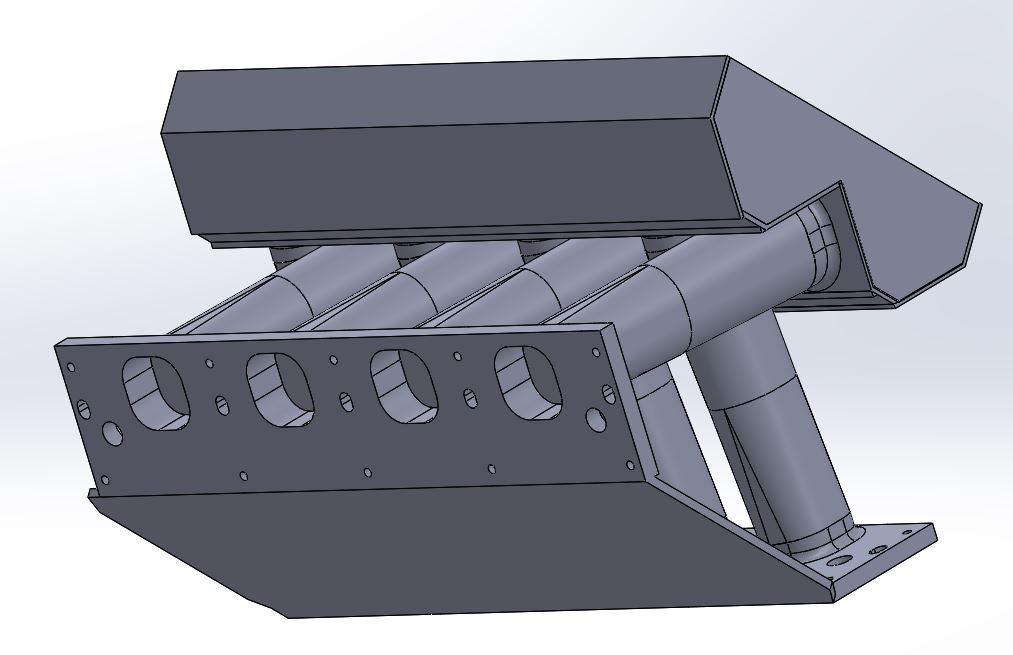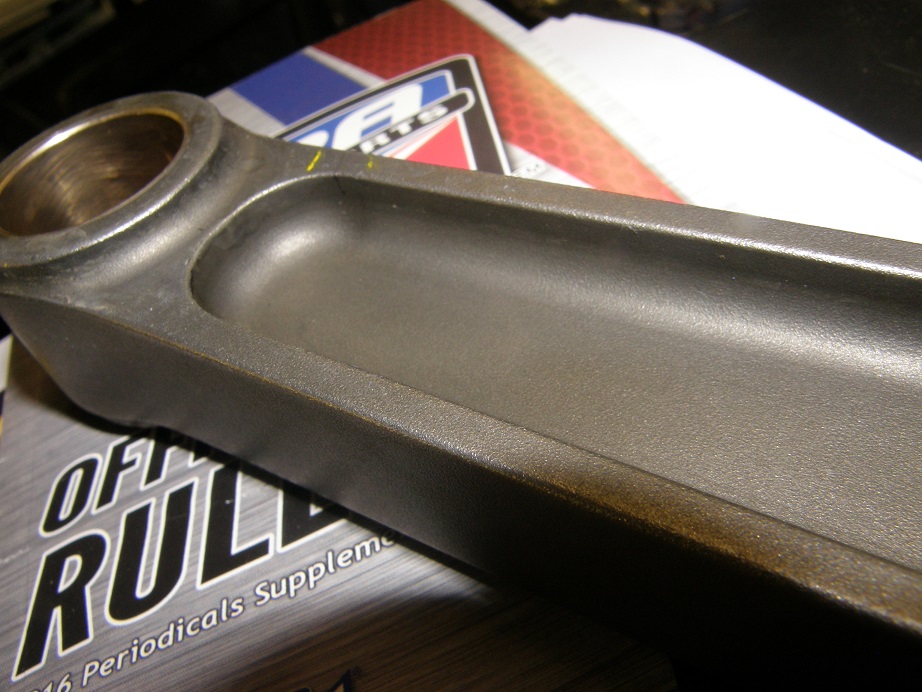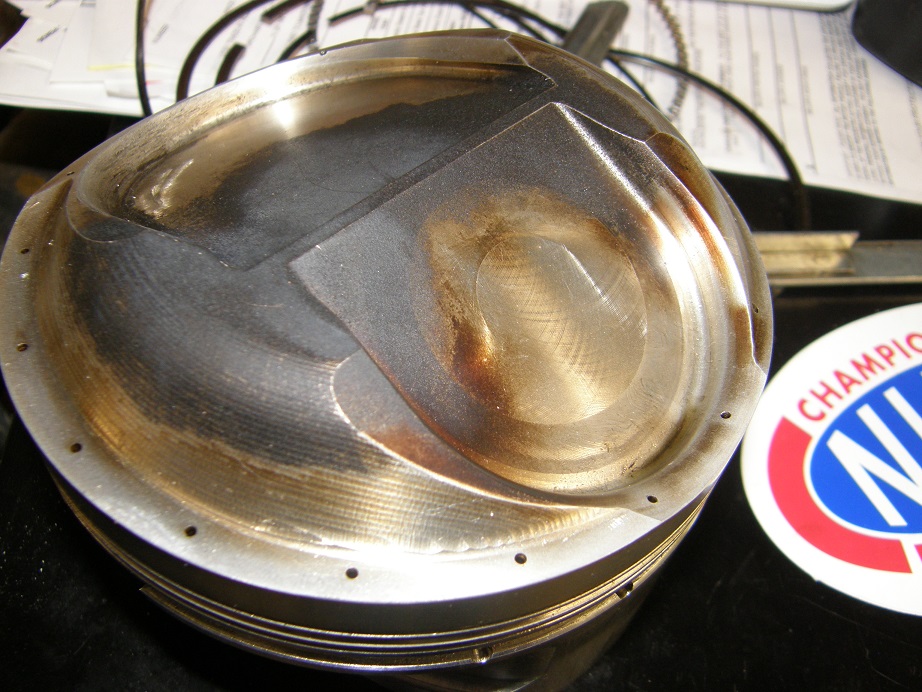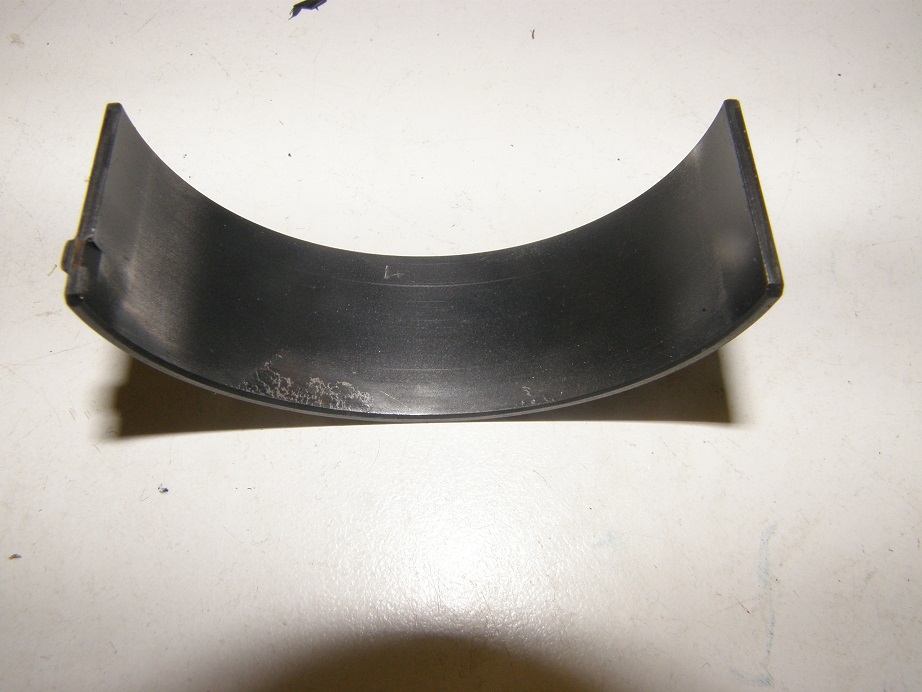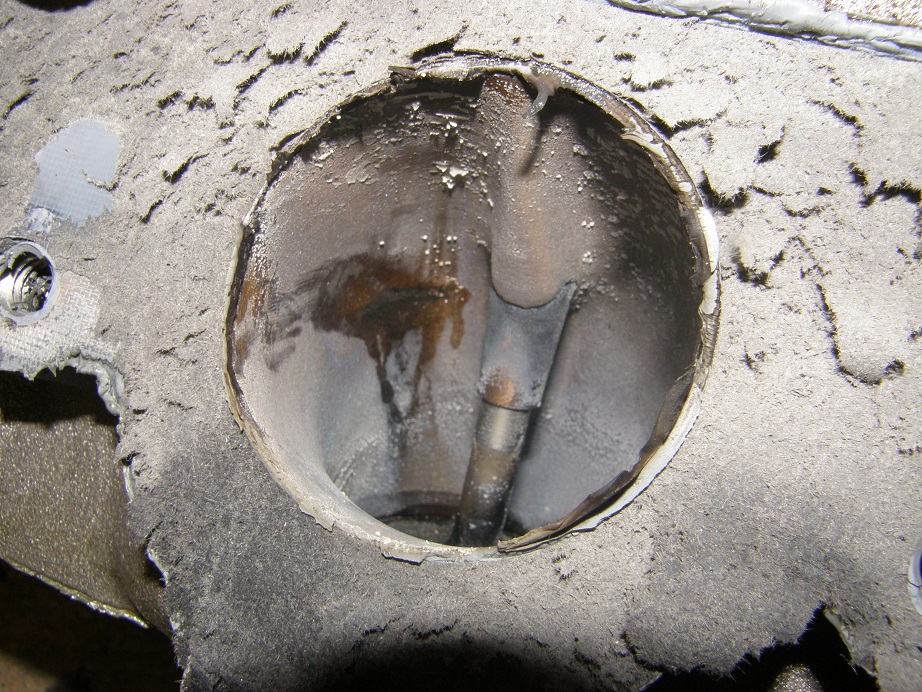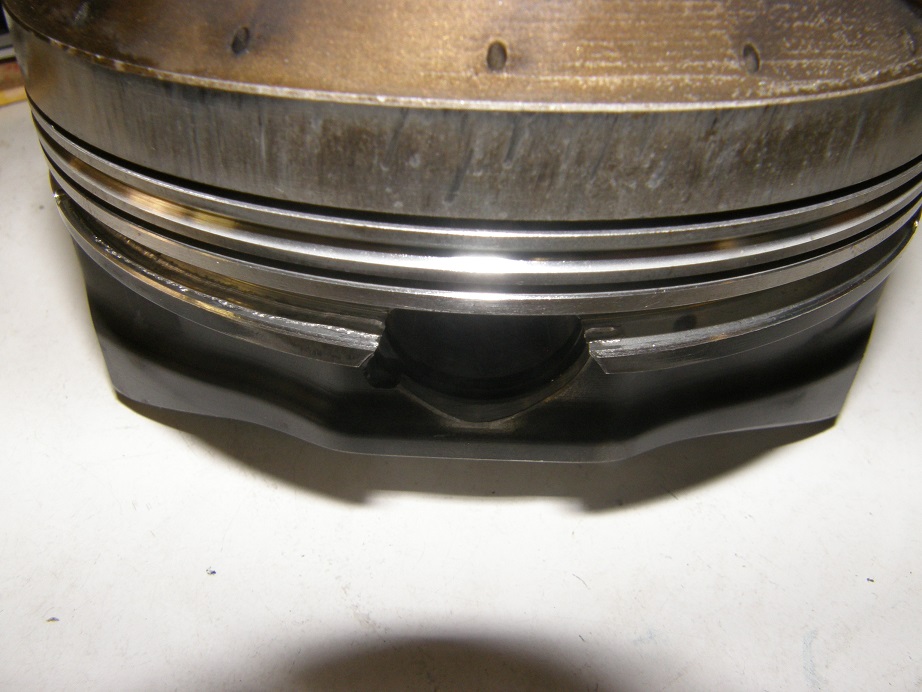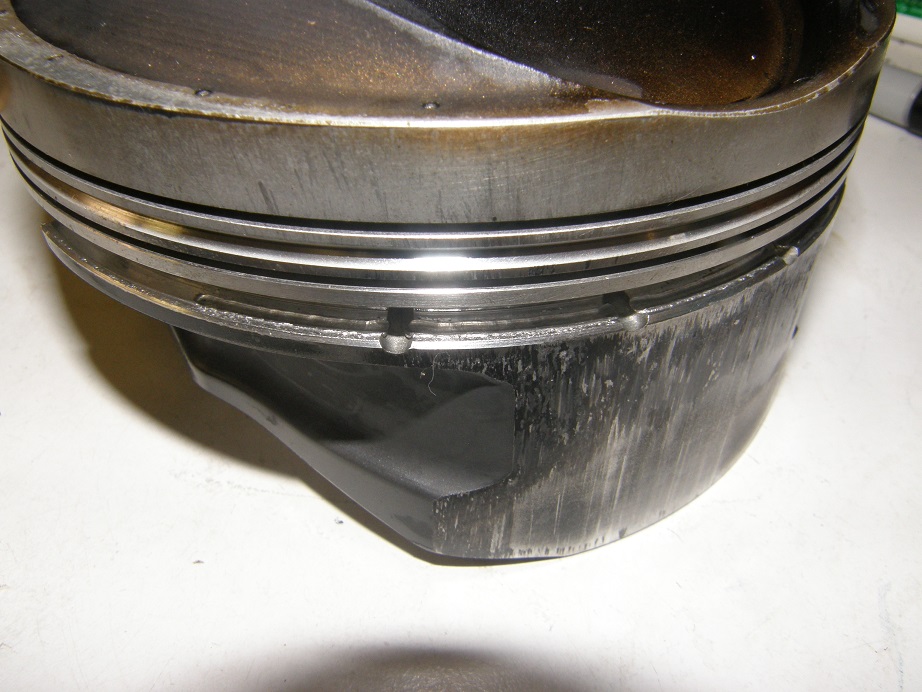121
The Road to Drag Week 2016 / Drag Week 2016 Registration, Days 1 and 2 - Updated 9:00AM 9/16 EDT
« on: September 14, 2016, 06:04:14 AM »
This is going to be a "living" post, because I don't have time to write it all now. Sorry I haven't been giving my usual updates, but I arrived at Drag Week this year sick, and it has taken me a few days to recover. Right now I am running second in class behind Brad Dyer's Nova, which has a new motor and pretty much has me covered at this point. My car is not 60 footing like it should, down about half a tenth from last year. Pretty sure that the switch to 4.11 gears, from 4.29s, was a mistake. The engine is running strong but is leaking some oil from up in the dry sump tank and oil filter area; going to try to get that resolved today. I will try to do a play by play a little later and add it to this post; lowlights include the drive from National Trail to Norwalk, which was brutal and confusing, and we didn't get in until 1:30 AM Tuesday, and registration, where we were in line waiting to get checked in for over 8 hours. Highlights were getting back in touch with old friends and watching the cars go down the track.
Updated 9/14/16:
Friday I had the day off to get packed and ready for the trip to Columbus. My plan was to fix a minor electrical issue, take the car off for a car wash, then get back home, pull the valve covers, lash the valves, check the timing chain tension, pull the mufflers and bolt on the slicks, and then start packing. I figured I could get this all done by noon. Steve was coming over to help me out about 1:00 he said; I got going at 7:30 figuring I had plenty of time. Solving the electrical problem was easy, and the car drove fine back and forth to the car wash. Around 9:30 I pulled it back into the garage and started on the valves. Pulled the valve covers and started to rotate the engine around to #1 when I noticed - Crap! - one of my rocker arm rollers didn't look right. Sure enough, it was rough on the edge, with a matching rough spot on the cam. It was the #6 intake rocker.
Well, this of course added some time to my plan. I was immediately concerned that I could be seeing the start of multiple rocker arm failures. These rockers were not new, having already gone through one Drag Week plus another 800 or so street miles. I had lost the #5 exhaust rocker at Drag Week 2015 and I had been hoping that one was a fluke, but of course a second failure put that theory to rest. There was nothing to do but change the rocker, so I set to work doing that. I had planned to bring a complete spare set with me to Drag Week anyway.
Steve arrived early, while I was still finishing up, but by 1:00 the engine was buttoned back up and I was ready to start packing. I have a three page list of items to bring with, all of which have to be found (not necessarily easy!), packed in the right box, and set outside of the shop to be loaded into the trailer. It took Steve and I until almost 6:00 to get everything collected and organized. Next we decided to put the car on the trailer, and then back the truck and trailer up to the shop for loading. Steve and I had already loaded the small Drag Week trailer into the back of the pickup. I started the car and pulled it around, and drove it up on the trailer. We got it strapped down, and only then did we notice the stream of transmission fluid that the car had been leaking all the way up the trailer. We certainly couldn't leave it like that, so back off the trailer it came, and into the shop. We jacked it up in the air to look for the leak. The first thing I did was to open the drain on the overflow can at the bottom of the transmission. Enough fluid came out that it looked like it had been full; maybe it had overfilled the overflow can and was come out of that? We started the engine up and left the drain open while the car was running, and a steady drizzle came out of the overflow for a couple minutes, then gradually stopped. I'd never touched the fluid level after changing from the Gear Vendors overdrive to a standard tailshaft, so our guess was that for whatever reason, the transmission needed less fluid without the overdrive attached. We closed up the overflow and figured that we'd watch the problem. However, while the car had been up in the air running, I had found another problem. My water pump was leaking, between the electric motor and the pump body. Not much, just a drop every 3-4 seconds, but enough to be a concern. By this time it was nearly 8:00, and I wasn't going to change water pumps at that point, plus we already had the spare pump in the spares box. So, we took the car off the jacks and loaded it onto the trailer again. We had been hoping to leave by 6:00, but by the time we got everything loaded and were ready to leave it was 9:30.
We had been getting updates on Joel's GTX all day, and by the time we left Joel and Jeff had still not gotten the engine fired. Steve and I drove for two hours and then called it a night, staying at a Wisconsin hotel. By the time we got to the hotel, I had a fairly bad sore throat. I hardly slept a wink all night.
Saturday we were up early, and I was still feeling lousy, but popping Advils and sitting in the air conditioned truck for the trip to Columbus wasn't so bad. We arrived around 7:00 PM to a packed hotel parking lot, as usual, and ended up parking the truck and trailer on the grass. We spent a little time talking to some old friends, who stood well clear of me as soon as they heard me speak LOL! I could hardly talk with the sore throat. I went to bed early on Saturday night, hoping to feel better in the morning.
Sunday morning my sore throat was gone but this summer cold I had picked up had moved into my head, so I still felt pretty lousy. I had decided during the trip down that I didn't want to go through Drag Week tech with the water pump leaking, so at 8:00 AM Sunday I was out in front of the car on the trailer, working on getting the water pump changed. That took an hour or so, and after Steve and I had breakfast we headed to the track for the long wait in the registration line. We arrived at about 10:00, unloaded the car, and went to the back of the line. Every half hour or so, the cars moved up five or six places; the pace was positively glacial. We spent the time between moving the car chatting with new and old friends, and I was happy to see Doug Smith again after 11-12 years, and meet his son and wife at the track. Joel and Jeff arrived just after we did, having driven all night in Joel's convertible GTX. They had thrown in the towel on the race GTX at 3:00 AM Saturday morning, when the engine fired but did not deliver the expected oil pressure, so they pulled Joel's stock Hemi GTX convertible out of the garage, and headed off Saturday morning in that.
Eventually while we were in the registration line Keith Turk, the race director, came by and said that the NHRA tech inspectors at National Trail were being very meticulous and checking everything; this was slowing down the registration process, and Keith said there was nothing he could do. We ended up sitting in the registration line for 8-1/2 hours, until we finally got through around 7:00. It was hot and uncomfortable, and one of those parts of Drag Week that isn't any fun at all, but we finally made it through. Sitting out getting sunburned for 8 hours didn't make me feel any better either, but at the end of the night Steve, Kevin, Joel, Jeff and I snuck into a Red Lobster right before they closed and had a nice dinner. We went to bed that night around midnight, and again I was hoping to feel better in the morning.
Monday, Drag Week Day 1 (updated 9/16):
Again, sorry for the late updates but this has been a very busy week. Before going onto Monday, here is a picture of the car in the registration line at National Trail, from last Sunday:
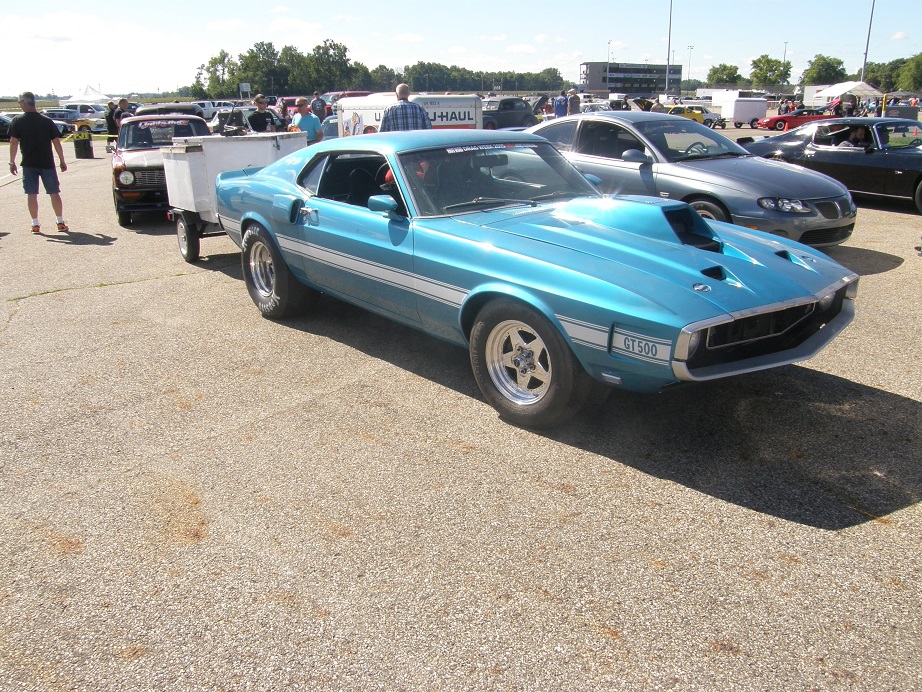
Monday morning we got into the track and got unloaded. The drivers meeting started at 8:30 and had the usual information, including 346 cars at this year's event! Of course, they had 400 registered, and a bunch of cars that were not registered showed up and got in since the event wasn't full. I'm thinking Hot Rod collected over $130K from the racers to orchestrate this event. Sure has grown into a big thing.
After the driver's meeting Steve and I finished getting the car ready to race and got into the staging lanes. We waited there for at least an hour and a half; there were multiple problems on the track, including oildowns and at least one crash, but finally I got to the line in the left lane. I was really looking forward to the results of this pass; the car was 100 pounds lighter than it was before, and picked up a little horsepower over last year, and with the change to 4.11 gears I figured it would pick up a tenth. On the launch and going down the track, it felt pretty much the same as last year, and sure enough, the time slip showed an 8.94 at 150.7 MPH. The ET was nearly identical to what I had been running last year, but the MPH was up by a couple. However, the really disappointing thing was the 60 foot time. Last year I'd been running very consistently in the 1.29 area, with a fast time of 1.28. On this pass, the 60 foot was 1.336, significantly slower than last year.
Jeff had taken a video of the car from the side on the launch, and as we watched it in slow motion the car hooked for about 10 feet, and then as soon as the front suspension topped out, it started to spin. We decided to try some chassis adjustments to address this issue, so I stiffened up the front shock setting a few clicks to keep the front end from topping out as hard, and also tried another pound of air in the tires, because they looked like they were being crushed pretty good by the launch.
We had to wait until the open session to get back out on the track. One thing I've noticed this year at Drag Week is with all the cars running, and most of the classes faster than before, there are more stoppages to the action, so waiting in the staging lanes is longer. As a result, there is not the time to make multiple passes like there has been in the past. By the time I got back up to the starting line again, it was 3:00 PM. Again Jeff recorded the car from the side on the launch, and the changes seemed to have made no effect on the traction; the car was doing the same thing. This time I ran an 8.966 @ 150.63 MPH, with a 1.34 60 foot. In the past I've always run slow at National Trail, and I chalked the traction problems up to that. Hoping to run better at Norwalk, we got the car back into street trim, packed up, and headed out of the gate for the drive at 4:30.
At the driver's meeting they had warned us about this route. Using normal roads, Norwalk is only about 80 miles from National Trail, but our route instructions took us way out of the way, to cover about 250 miles. I would say that before we were done on Monday, we covered more like 300. The instructions were terrible. We took several wrong turns trying to follow the directions. One direction even led us down to a road that was closed! Another example was the instruction to go two tenths of a mile and turn right on some road, when in fact you actually had to go over ten miles before you found the right road. My co-pilot Steve does not have a smart phone, and it was difficult for me to use mine while I was trying to drive the car, plus it wasn't long before we were trying to find our way in the dark. Short story, it was a big mess, and everybody was complaining about the directions the next day. Nevertheless, we finally made it through the route and into our hotel at around 1:30 AM Tuesday morning. Here are a couple of photos showing the checkpoints on the route:
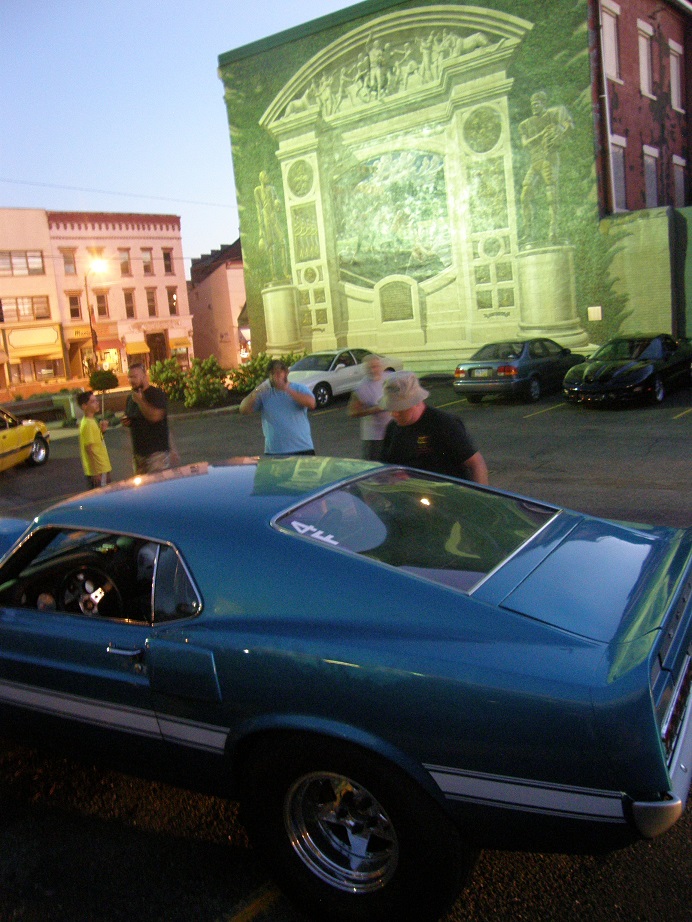
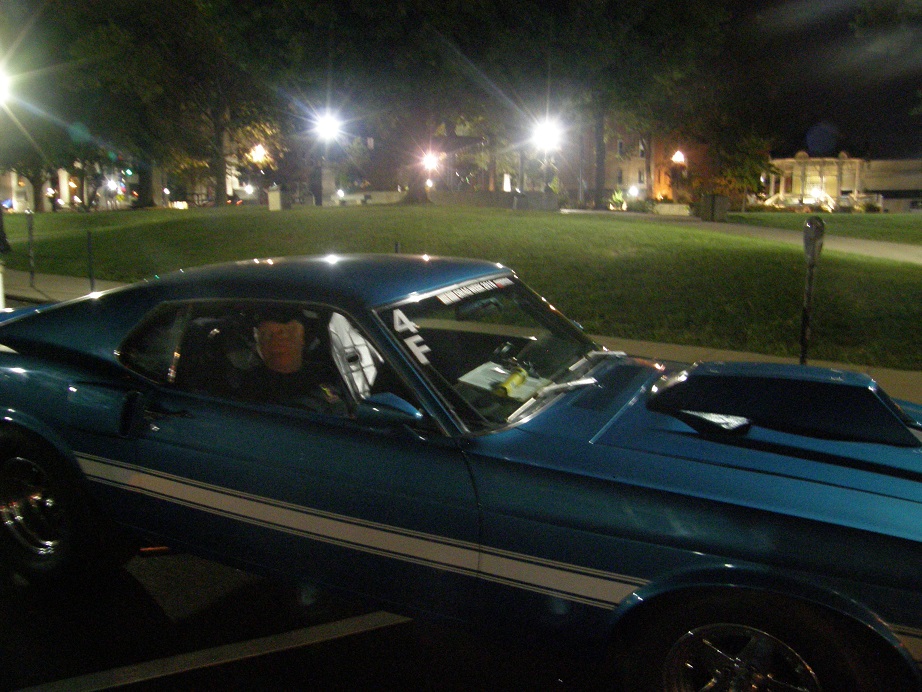
Tuesday morning we left the hotel around 7:30 for the track. I had been concerned that the car wouldn't start on Tuesday morning, because at the end of the drive last night the voltage gauge had been dropping a little low, below 13V, and also because when I came outside on Tuesday morning one of the Aussies pitted at the same hotel had mentioned to me that he had shut my door that morning. Apparently in my tired stupor at 1:30 AM I had not completed closed it, and the dome light had been on all night. Despite these fears, the car fired right up; the starter issues I had last year have not been repeated this year. We found our way to the track and got the car ready to race; my 8.94 was second best to Brad Dyer's 8.90 on Monday, so I was currently running a close second in class. I was pretty sure that I would run better at Norwalk than I had a National Trail, and was hoping that my 60 foot time would come back into line to get me into the 8.70s, which had been a goal for the year.
Once again we had to wait quite a while in the staging lanes, and while we were up there Larry Kortkamp came by. It was great to see Larry again (who runs the 64 wagon Battlestar Galactic in his race series), and we spent some time catching up. Larry commented that last time we met up at Drag Week in 2009, he had been able to drive his 64 blown Galaxie right into the pits and park next to us, but that the event has gotten so big that all the spectators were confined to a separate area for parking now. Looking around in the staging lines, six lanes filled with the class cars, it sure drove the point home.
Finally I made it to the line, and made the pass. The car didn't feel like it left any harder, but it ran its normal straight as an arrow pass. The time slip was very, very disappointing to me, at 9.01 and 150.6. Sixty foot time again was at 1.34. It was clear that the car had slowed down significantly from last year in the 60 foot department, despite the weight loss. It was equally clear to me at that point that the switch from 4.29 to 4.11 gears was the culprit. I was only running 7400 or so through the traps this year, which was what I had wanted to accomplish with the gear change, but I had left a bunch of time on the starting line as a result.
Brad Dyer's Nova came up and made a great pass, an 8.64, and at that point it was clear that there was no way I was going to be able to hang with him this year. As a result, I elected not to make a second pass, and set about packing up for the road trip. Given the brutal drive the previous night, I wanted to get out of the track as soon as possible anyway, and try to get the drive finished during the daylight.
Before we left one of the Hot Rod guys came up and did a nice interview with me about the car and the engine, not sure where that ended up, if anywhere. Finally we got on the road just after noon. This time, Jeff drove with me, and Steve drove with Joel. We had cleared the trunk monkey swap with Keith Turk, the race director, on registration day, so we could have a little variety for the drives.
The route on Tuesday was 100 times easier than the one on Monday. We were on our way up to Martin but our hotel was in Kalamazoo, a good 25 miles from the track. The worst part of the drive was the waiting to get onto one of the interstate exits we were supposed to take. We waited, idling, for at least 20-25 minutes, in the hot afternoon sun. Water temp on the car creeped up to 210, and without any anti-freeze and only a 6-8 pound cap, I was worried about boiling over. But finally we made it onto the freeway and got going down the road. Hindsight being 20/20, I think this extended period of idling caused me some problems on Wednesday.
We made it into the hotel around 9:00 PM on Tuesday night. Here's some pictures at the checkpoints along the way:
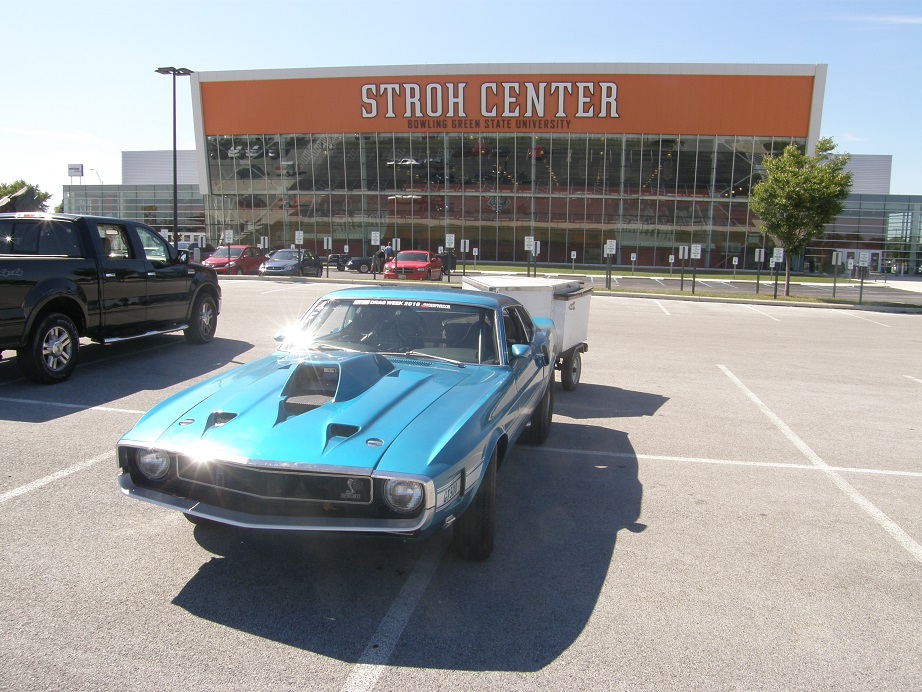
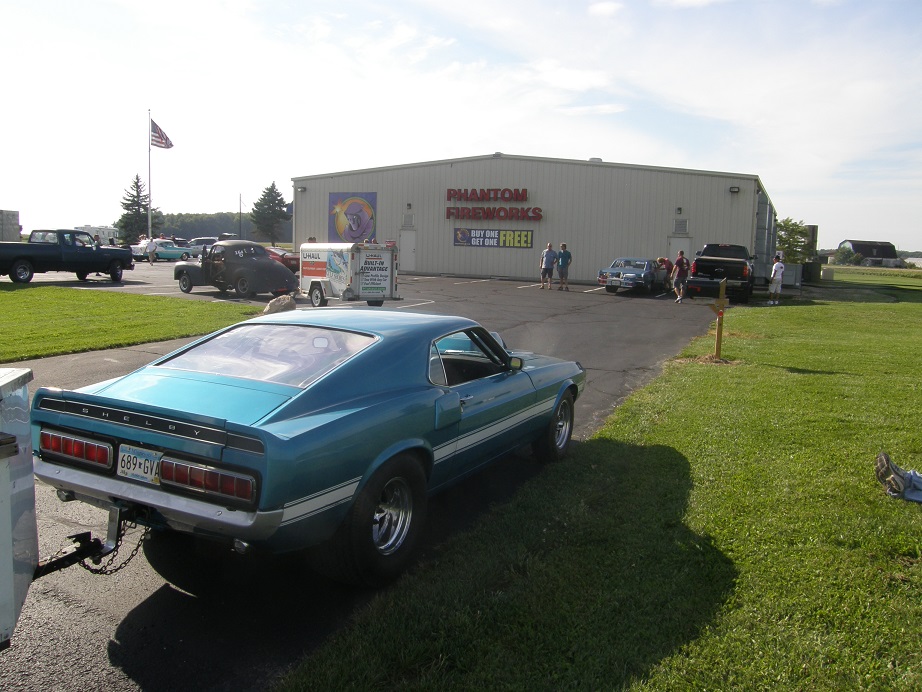
We had decided to get together for dinner, but when Joel pulled in with the GTX, he didn't have his driver's side power window working. He decided he had to take the door panel off and fiddle around to get it working. All the rest of us were starving, and just couldn't wait around any longer to help Joel, so Jeff, Steve and I headed across the parking lot to a local restaurant, and Kevin followed shortly thereafter. I was looking forward to having Joel join us, because I had a present for him. Joel had interrupted his preparations for Drag Week in August in order to go to Bonneville, and in the end it cost him, because he ran out of time to get his red GTX ready. I had this photoshopped picture of him relaxing at Bonneville framed and ready to give to him on Tuesday night:

By 11:30 Joel hadn't yet shown up, and I was still feeling pretty lousy from my cold, but while sitting on the stool at the table suddenly I got a bad cramp in my leg. I stood up to straighten it out, and started to feel lightheaded, so I sat down again. A moment later I passed out, head down on the table.
There is still some disagreement about what was being said while I was unconscious, but from what I can gather, if I was dead there was going to be an argument about who got to keep the race car LOL! Fortunately the guys shook me awake pretty quick so I got to keep the car myself I figured for me to pass out, I must still be sicker than I thought. I still felt pretty shaky when Joel arrived a few minutes later. I gave him is framed picture, and then got back to the hotel and crashed. I'll put Wednesday's report in a separate post - Jay
I figured for me to pass out, I must still be sicker than I thought. I still felt pretty shaky when Joel arrived a few minutes later. I gave him is framed picture, and then got back to the hotel and crashed. I'll put Wednesday's report in a separate post - Jay
Updated 9/14/16:
Friday I had the day off to get packed and ready for the trip to Columbus. My plan was to fix a minor electrical issue, take the car off for a car wash, then get back home, pull the valve covers, lash the valves, check the timing chain tension, pull the mufflers and bolt on the slicks, and then start packing. I figured I could get this all done by noon. Steve was coming over to help me out about 1:00 he said; I got going at 7:30 figuring I had plenty of time. Solving the electrical problem was easy, and the car drove fine back and forth to the car wash. Around 9:30 I pulled it back into the garage and started on the valves. Pulled the valve covers and started to rotate the engine around to #1 when I noticed - Crap! - one of my rocker arm rollers didn't look right. Sure enough, it was rough on the edge, with a matching rough spot on the cam. It was the #6 intake rocker.
Well, this of course added some time to my plan. I was immediately concerned that I could be seeing the start of multiple rocker arm failures. These rockers were not new, having already gone through one Drag Week plus another 800 or so street miles. I had lost the #5 exhaust rocker at Drag Week 2015 and I had been hoping that one was a fluke, but of course a second failure put that theory to rest. There was nothing to do but change the rocker, so I set to work doing that. I had planned to bring a complete spare set with me to Drag Week anyway.
Steve arrived early, while I was still finishing up, but by 1:00 the engine was buttoned back up and I was ready to start packing. I have a three page list of items to bring with, all of which have to be found (not necessarily easy!), packed in the right box, and set outside of the shop to be loaded into the trailer. It took Steve and I until almost 6:00 to get everything collected and organized. Next we decided to put the car on the trailer, and then back the truck and trailer up to the shop for loading. Steve and I had already loaded the small Drag Week trailer into the back of the pickup. I started the car and pulled it around, and drove it up on the trailer. We got it strapped down, and only then did we notice the stream of transmission fluid that the car had been leaking all the way up the trailer. We certainly couldn't leave it like that, so back off the trailer it came, and into the shop. We jacked it up in the air to look for the leak. The first thing I did was to open the drain on the overflow can at the bottom of the transmission. Enough fluid came out that it looked like it had been full; maybe it had overfilled the overflow can and was come out of that? We started the engine up and left the drain open while the car was running, and a steady drizzle came out of the overflow for a couple minutes, then gradually stopped. I'd never touched the fluid level after changing from the Gear Vendors overdrive to a standard tailshaft, so our guess was that for whatever reason, the transmission needed less fluid without the overdrive attached. We closed up the overflow and figured that we'd watch the problem. However, while the car had been up in the air running, I had found another problem. My water pump was leaking, between the electric motor and the pump body. Not much, just a drop every 3-4 seconds, but enough to be a concern. By this time it was nearly 8:00, and I wasn't going to change water pumps at that point, plus we already had the spare pump in the spares box. So, we took the car off the jacks and loaded it onto the trailer again. We had been hoping to leave by 6:00, but by the time we got everything loaded and were ready to leave it was 9:30.
We had been getting updates on Joel's GTX all day, and by the time we left Joel and Jeff had still not gotten the engine fired. Steve and I drove for two hours and then called it a night, staying at a Wisconsin hotel. By the time we got to the hotel, I had a fairly bad sore throat. I hardly slept a wink all night.
Saturday we were up early, and I was still feeling lousy, but popping Advils and sitting in the air conditioned truck for the trip to Columbus wasn't so bad. We arrived around 7:00 PM to a packed hotel parking lot, as usual, and ended up parking the truck and trailer on the grass. We spent a little time talking to some old friends, who stood well clear of me as soon as they heard me speak LOL! I could hardly talk with the sore throat. I went to bed early on Saturday night, hoping to feel better in the morning.
Sunday morning my sore throat was gone but this summer cold I had picked up had moved into my head, so I still felt pretty lousy. I had decided during the trip down that I didn't want to go through Drag Week tech with the water pump leaking, so at 8:00 AM Sunday I was out in front of the car on the trailer, working on getting the water pump changed. That took an hour or so, and after Steve and I had breakfast we headed to the track for the long wait in the registration line. We arrived at about 10:00, unloaded the car, and went to the back of the line. Every half hour or so, the cars moved up five or six places; the pace was positively glacial. We spent the time between moving the car chatting with new and old friends, and I was happy to see Doug Smith again after 11-12 years, and meet his son and wife at the track. Joel and Jeff arrived just after we did, having driven all night in Joel's convertible GTX. They had thrown in the towel on the race GTX at 3:00 AM Saturday morning, when the engine fired but did not deliver the expected oil pressure, so they pulled Joel's stock Hemi GTX convertible out of the garage, and headed off Saturday morning in that.
Eventually while we were in the registration line Keith Turk, the race director, came by and said that the NHRA tech inspectors at National Trail were being very meticulous and checking everything; this was slowing down the registration process, and Keith said there was nothing he could do. We ended up sitting in the registration line for 8-1/2 hours, until we finally got through around 7:00. It was hot and uncomfortable, and one of those parts of Drag Week that isn't any fun at all, but we finally made it through. Sitting out getting sunburned for 8 hours didn't make me feel any better either, but at the end of the night Steve, Kevin, Joel, Jeff and I snuck into a Red Lobster right before they closed and had a nice dinner. We went to bed that night around midnight, and again I was hoping to feel better in the morning.
Monday, Drag Week Day 1 (updated 9/16):
Again, sorry for the late updates but this has been a very busy week. Before going onto Monday, here is a picture of the car in the registration line at National Trail, from last Sunday:

Monday morning we got into the track and got unloaded. The drivers meeting started at 8:30 and had the usual information, including 346 cars at this year's event! Of course, they had 400 registered, and a bunch of cars that were not registered showed up and got in since the event wasn't full. I'm thinking Hot Rod collected over $130K from the racers to orchestrate this event. Sure has grown into a big thing.
After the driver's meeting Steve and I finished getting the car ready to race and got into the staging lanes. We waited there for at least an hour and a half; there were multiple problems on the track, including oildowns and at least one crash, but finally I got to the line in the left lane. I was really looking forward to the results of this pass; the car was 100 pounds lighter than it was before, and picked up a little horsepower over last year, and with the change to 4.11 gears I figured it would pick up a tenth. On the launch and going down the track, it felt pretty much the same as last year, and sure enough, the time slip showed an 8.94 at 150.7 MPH. The ET was nearly identical to what I had been running last year, but the MPH was up by a couple. However, the really disappointing thing was the 60 foot time. Last year I'd been running very consistently in the 1.29 area, with a fast time of 1.28. On this pass, the 60 foot was 1.336, significantly slower than last year.
Jeff had taken a video of the car from the side on the launch, and as we watched it in slow motion the car hooked for about 10 feet, and then as soon as the front suspension topped out, it started to spin. We decided to try some chassis adjustments to address this issue, so I stiffened up the front shock setting a few clicks to keep the front end from topping out as hard, and also tried another pound of air in the tires, because they looked like they were being crushed pretty good by the launch.
We had to wait until the open session to get back out on the track. One thing I've noticed this year at Drag Week is with all the cars running, and most of the classes faster than before, there are more stoppages to the action, so waiting in the staging lanes is longer. As a result, there is not the time to make multiple passes like there has been in the past. By the time I got back up to the starting line again, it was 3:00 PM. Again Jeff recorded the car from the side on the launch, and the changes seemed to have made no effect on the traction; the car was doing the same thing. This time I ran an 8.966 @ 150.63 MPH, with a 1.34 60 foot. In the past I've always run slow at National Trail, and I chalked the traction problems up to that. Hoping to run better at Norwalk, we got the car back into street trim, packed up, and headed out of the gate for the drive at 4:30.
At the driver's meeting they had warned us about this route. Using normal roads, Norwalk is only about 80 miles from National Trail, but our route instructions took us way out of the way, to cover about 250 miles. I would say that before we were done on Monday, we covered more like 300. The instructions were terrible. We took several wrong turns trying to follow the directions. One direction even led us down to a road that was closed! Another example was the instruction to go two tenths of a mile and turn right on some road, when in fact you actually had to go over ten miles before you found the right road. My co-pilot Steve does not have a smart phone, and it was difficult for me to use mine while I was trying to drive the car, plus it wasn't long before we were trying to find our way in the dark. Short story, it was a big mess, and everybody was complaining about the directions the next day. Nevertheless, we finally made it through the route and into our hotel at around 1:30 AM Tuesday morning. Here are a couple of photos showing the checkpoints on the route:


Tuesday morning we left the hotel around 7:30 for the track. I had been concerned that the car wouldn't start on Tuesday morning, because at the end of the drive last night the voltage gauge had been dropping a little low, below 13V, and also because when I came outside on Tuesday morning one of the Aussies pitted at the same hotel had mentioned to me that he had shut my door that morning. Apparently in my tired stupor at 1:30 AM I had not completed closed it, and the dome light had been on all night. Despite these fears, the car fired right up; the starter issues I had last year have not been repeated this year. We found our way to the track and got the car ready to race; my 8.94 was second best to Brad Dyer's 8.90 on Monday, so I was currently running a close second in class. I was pretty sure that I would run better at Norwalk than I had a National Trail, and was hoping that my 60 foot time would come back into line to get me into the 8.70s, which had been a goal for the year.
Once again we had to wait quite a while in the staging lanes, and while we were up there Larry Kortkamp came by. It was great to see Larry again (who runs the 64 wagon Battlestar Galactic in his race series), and we spent some time catching up. Larry commented that last time we met up at Drag Week in 2009, he had been able to drive his 64 blown Galaxie right into the pits and park next to us, but that the event has gotten so big that all the spectators were confined to a separate area for parking now. Looking around in the staging lines, six lanes filled with the class cars, it sure drove the point home.
Finally I made it to the line, and made the pass. The car didn't feel like it left any harder, but it ran its normal straight as an arrow pass. The time slip was very, very disappointing to me, at 9.01 and 150.6. Sixty foot time again was at 1.34. It was clear that the car had slowed down significantly from last year in the 60 foot department, despite the weight loss. It was equally clear to me at that point that the switch from 4.29 to 4.11 gears was the culprit. I was only running 7400 or so through the traps this year, which was what I had wanted to accomplish with the gear change, but I had left a bunch of time on the starting line as a result.
Brad Dyer's Nova came up and made a great pass, an 8.64, and at that point it was clear that there was no way I was going to be able to hang with him this year. As a result, I elected not to make a second pass, and set about packing up for the road trip. Given the brutal drive the previous night, I wanted to get out of the track as soon as possible anyway, and try to get the drive finished during the daylight.
Before we left one of the Hot Rod guys came up and did a nice interview with me about the car and the engine, not sure where that ended up, if anywhere. Finally we got on the road just after noon. This time, Jeff drove with me, and Steve drove with Joel. We had cleared the trunk monkey swap with Keith Turk, the race director, on registration day, so we could have a little variety for the drives.
The route on Tuesday was 100 times easier than the one on Monday. We were on our way up to Martin but our hotel was in Kalamazoo, a good 25 miles from the track. The worst part of the drive was the waiting to get onto one of the interstate exits we were supposed to take. We waited, idling, for at least 20-25 minutes, in the hot afternoon sun. Water temp on the car creeped up to 210, and without any anti-freeze and only a 6-8 pound cap, I was worried about boiling over. But finally we made it onto the freeway and got going down the road. Hindsight being 20/20, I think this extended period of idling caused me some problems on Wednesday.
We made it into the hotel around 9:00 PM on Tuesday night. Here's some pictures at the checkpoints along the way:


We had decided to get together for dinner, but when Joel pulled in with the GTX, he didn't have his driver's side power window working. He decided he had to take the door panel off and fiddle around to get it working. All the rest of us were starving, and just couldn't wait around any longer to help Joel, so Jeff, Steve and I headed across the parking lot to a local restaurant, and Kevin followed shortly thereafter. I was looking forward to having Joel join us, because I had a present for him. Joel had interrupted his preparations for Drag Week in August in order to go to Bonneville, and in the end it cost him, because he ran out of time to get his red GTX ready. I had this photoshopped picture of him relaxing at Bonneville framed and ready to give to him on Tuesday night:

By 11:30 Joel hadn't yet shown up, and I was still feeling pretty lousy from my cold, but while sitting on the stool at the table suddenly I got a bad cramp in my leg. I stood up to straighten it out, and started to feel lightheaded, so I sat down again. A moment later I passed out, head down on the table.
There is still some disagreement about what was being said while I was unconscious, but from what I can gather, if I was dead there was going to be an argument about who got to keep the race car LOL! Fortunately the guys shook me awake pretty quick so I got to keep the car myself
 I figured for me to pass out, I must still be sicker than I thought. I still felt pretty shaky when Joel arrived a few minutes later. I gave him is framed picture, and then got back to the hotel and crashed. I'll put Wednesday's report in a separate post - Jay
I figured for me to pass out, I must still be sicker than I thought. I still felt pretty shaky when Joel arrived a few minutes later. I gave him is framed picture, and then got back to the hotel and crashed. I'll put Wednesday's report in a separate post - Jay

 I'll try to post a detailed update tomorrow night - Jay
I'll try to post a detailed update tomorrow night - Jay
